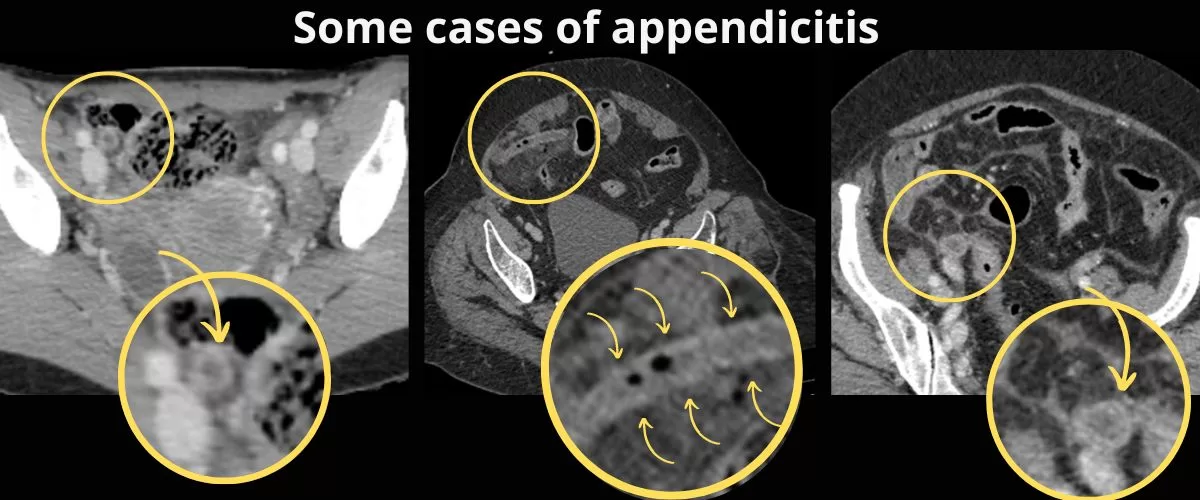When you get a sharp pain in your abdomen, out of nowhere, there’s always that thought: could it be appendicitis?
It’s a fair question, because if you do have an appendicitis, you better catch it early. That way the surgeon can remove it before it bursts and messes everything around it.
What Is The Appendix And What Is It For?
It’s a very small kind of “finger”, attached to your colon. As for its function, it’s completely useless. Seriously, we don’t use it at all, it is just there, hanging out.
Most people agree it may have had some role many years ago but, whatever it was, it was lost.
That’s why the best way to treat appendicitis is to remove it altogether.
How Do You Know If It’s Appendicitis?
Let’s start with what it feels like. It’s a sharp pain that starts around your bellybutton, nothing special. However, after a few hours, the pain moves towards the lower right part of your belly and it stays there.
It’s a deep pain, like you can’t even breathe because it hurts, especially when you take a deep breath. Even if you take some painkillers, the pain won’t go away. It may improve a little, but it’s still there.
Some people can have a fever. This is is because appendicitis is an infection inside your abdomen.
If you have pain in your belly and you are starting to feel chills or sweating, you should go to the doctor, because there is a chance that you do have appendicitis.
Once you get to the hospital, they’ll take some blood tests. These will tell us if there is an infection going on and they’ll also rule out different conditions.
Especially for women, it’s important to rule out urinary infections because they can cause similar symptoms. Also, for young women, we need to make sure they are not pregnant, which can be another cause of abdominal pain.
If your bloodwork looks like appendicitis, you’ll get some kind of imaging test. We like ultrasound (US) better, because it doesn’t require any radiation and is usually pretty good at finding the appendix. It will show a thick, swollen appendix.
However, ultrasound is not enough in some cases. Sometimes, when the patient is obese, US can’t penetrate all the way to the appendix. Some other times, the appendix is just hiding behind the colon and ultrasound won’t spot it either.
For those cases, abdominal CT is a good choice. CT uses radiation, so it’s important to make sure you are not pregnant. These are some examples:

CT can also show if there are any complications. For example, it will show whether the appendix has burst already.
How To Treat Appendicitis
Most of the times, we need to remove the appendix through surgery. There are some small variations, though.
In the most common scenario, they will take you to the operating room during the next hours. You don’t want to wait too long as it will get worse—the appendix can explode and make a mess around it if you don’t do anything about it.
Nowadays, surgeons prefer laparoscopic surgery. This technique consists of using some thin rods (or trocars) to enter the abdomen.
Through these rods, the surgeon inserts a tiny camera and scalpels. This type of surgery is less invasive than the old-style. Instead of a large scar, you’ll get several small ones.
Sometimes, the appendix is already too affected, in the brink of bursting. This happens when it’s been too long since the symptoms started.
If we try to remove it immediately, we may end up tearing it and making things worse. In those cases some surgeons choose to wait. They call it “cooling it down“: they will give you i.v. antibiotics and wait for a few days. Then, when you are out of danger, they will perform surgery.
If It Is Not Appendicitis, Then What Is It?
Well, there are many causes of “stomach pain”. To mention just a few:
- Kidney stones: if there is a stone in your right kidney or ureter, it may feel very similar to appendicitis.
- Diverticulitis: it feels similar, but on the left side of your tummy.
- Stomach ulcers: they also cause very sharp pain. That pain is usually higher, above your bellybutton. They can be dangerous as they can cause a perforation.
- Urinary infections: they hurt, too, although they usually come with pain while peeing.
Leave a Reply